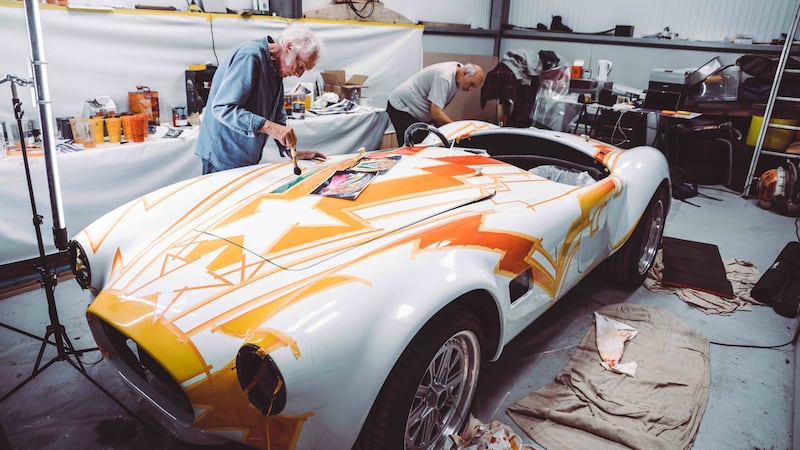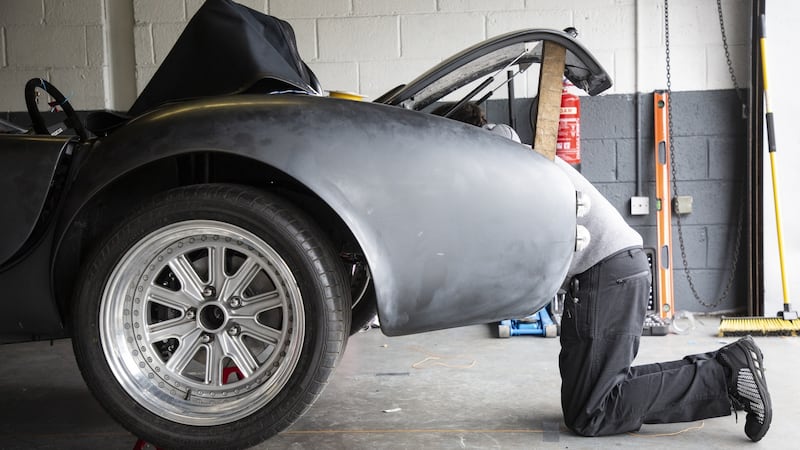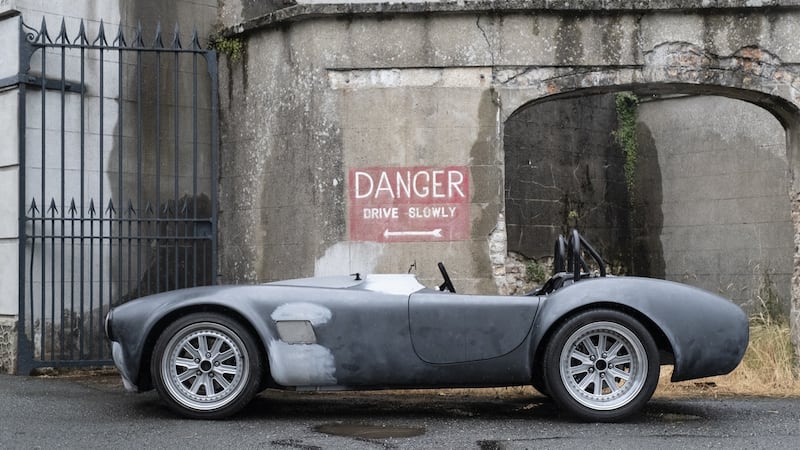Norman Crowley doesn't want to create an Irish Tesla. You might kind of automatically think that he would do – he is, after all, a youthful (relatively) entrepreneur, who has made his millions from modern tech, and who has a passion for reducing carbon emissions and trying to ameliorate climate change. Surely if you put all that together with a passion for making electric cars, you end up with an Irish Tesla, right?
“Wrong,” Crowley tells The Irish Times. “We really don’t. We want to build the world’s most beautiful classics. Our 2024 business plan calls for 300 cars to be built, but then so does our 2025 business plan. Not 700 cars, not thousands of cars. It isn’t about making volume, it’s about making cars.”
You could think of Crowley's electric classic cars – built by his company, AVA Electrifi – as shop windows for the carbon-reducing work done by his other companies, Crowley Carbon and Cool Planet Group. That would be slightly reductive, though. Although there's a definite, and obvious, halo effect to making such cars, and using them to advertise your other environmentally-friendly skills, Crowley is in this for the love of cars.
It's a love that runs in the blood. Crowley's father was the driving force ('scuse the pun) behind the creation of the Ford Model T statue in Ballinascarthy, Co Cork, which celebrates the fact that Henry Ford's family came from that village. Crowley himself worked with another Cork legend, Billy Coleman, servicing and repairing rally cars. His latest creation, though, is something which bears a legacy stretching from the Wicklow Mountains to the streets of swinging, 1960s London.
Across the hills and fields from AVA Electrifi's HQ, in Powerscourt House just outside Enniskerry, is Luggala House, which once was the home of Guinness heir Tara Browne. Browne could have easily been the template for Mike Meyers' comedy creation Austin Powers, as he lived it up in 1960s London, making friends with The Beatles among others. Browne used part of his fortune to buy a 1965 AC Cobra 289 sports car, which he decided needed a proper paint job.
Through his musical friends, Browne tracked down Dudley Edwards and Douglas Binder, pioneers of a pop-art style that would shortly become known as psychedelia. The Cobra was duly painted by Edwards and Binder in that distinctive, multicolour paint scheme. This wasn't just a case of a rich young thing getting a custom car – the paint work was considered a work of art in itself. And when the car was exhibited at the Robert Fraser Gallery in Mayfair there was a queue around the block to see it. Lord Snowdon did a photo shoot for the car. Pathé News made a newsreel about it.
Sadly, Browne didn’t get to enjoy it for very long. In 1966, in another of his sports cars – a Lotus Elan – he drove through a traffic light in south Kensington and struck a parked lorry, dying instantly. The Beatles memorialised him in the song A Day in the Life.
It’s Browne’s Cobra that Crowley wants to pay tribute to. “We did track down the original Tara Browne Cobra,” says Crowley. “But there was a bit of a moral question about should we buy it and convert to electric or would that be kind of sacrilege? Because the original was Tara’s car he’d worked on the engine, so we decided not to.”

Instead, Crowley has taken a replica of a 1960s Cobra, originally made by the UK-based company DAX, and has ripped out its ancient Rover V8 engine, gearbox, fuel tank and basically everything else. In place of the engine goes a compact battery, and an electric motor developing a reputed 500hp. There’s just enough juice in the battery for about 20 minutes of on-track driving at racing speeds, reckons Crowley’s AVA Electrifi team, or about 160km of more sedate on-road driving.
However, it’s unlikely that the car will ever be driven on-road. Sadly, when we saw it, it couldn’t be – software glitches and the late arrival of the battery (thanks, Brexit customs delays) meant that there was a scramble of last-minute prep before the car was shipped to London for painting. Not just any old paint job, either – Dudley Edwards is still alive, still painting, and is going to recreate the original Browne Cobra paint job. The car will be sold at auction at the exclusive Salon Privé classic car event, with some of the proceeds of the expected €1 million price tag being donated to climate change charities.
“After Salon Privé, London Fashion Week is on, so we’re going to show the car there too,” says Crowley. “We’re expecting huge excitement around the vehicle. You know, the last thing that Dudley painted was Paul McCartney’s piano.”

The Cobra is a one-off, a tribute to Tara Browne and his psychedelic lifestyle, and a way of connecting AVA Electrifi’s Wicklow-based efforts to the broader history of the Powerscourt Estate itself. There are plans for bigger things, though.
Already, Crowley has revealed plans to work on what he calls an electric "hyperclassic" – a reworking of a classic 1963 Corvette Stingray with a 2,000hp electric powertrain and active aerodynamics. Crowley has drafted in both ex-Jaguar designer Ian Callum, and Peter Brock, the designer of the original Corvette Stingray, to help create the car, and the first elements of that build will be laid down in the Wicklow workshop in coming weeks. It won't be a one-off – while not many will be made, you will be able to buy one, assuming you can come up with the €1.7 million asking price.
Can't afford that? Worry not – Crowley has more affordable (relatively speaking) vehicles planned. A second collaboration with Brock – still secret, but apparently based on another classic sixties design by the great man – is in the works with a simpler electric powertrain, and a less stratospheric asking price. Beyond that, AVA has plans for more electric Land Rover Defenders. The company, working with ECC in Wales, already builds about 25 electric-converted Defenders each year, but the next generation will be designed with much, much bigger batteries, ultra-long one-charge ranges, and sports-car-like acceleration times.

Beyond that? Who knows? Crowley’s plans include creating an “ice vault” each time he converts a classic car to electric power – preserving the original engine, gearbox, and other mechanical parts so that they stay with the car when it’s sold on, maintaining its mechanical heritage.
“We don’t want to say forget the past, f**k that! It’s not about getting rid of the past. We’re not saying that the stuff that was done in the past was bad. What was done in the past was emblematic of where we were then. Now, we can do different stuff.
“If you’ve got a business, say, and you’ve built it up, and you want to treat yourself to a nice car, well you can go and buy a Mercedes S-Class, but then everyone else has one of those too. And maybe you’re environmentally conscious, so you want to go and buy an electric car, so you look at a Tesla, but everyone else has one too.
“So right now, he’s our customer, because he can go and buy a car from us, for maybe €500,000, and it’s a car with a story, and it’s unique, and it makes him feel good, and it’s good for the environment. And him doing that enables us to make our next car more affordable, so now maybe it’s €100,000, and you can afford it, or your friends can. But the big difference is, you spend €100,000 on a new S-Class and next week it’s worth maybe €70,000. Spend that on an AVA Electrifi car, and next week it’s worth €150,000. The electric Defender that we made for Selfridges, we sold that to them for £160,000 and it was sold, out of their shop window, for £240,000, three weeks later.”












